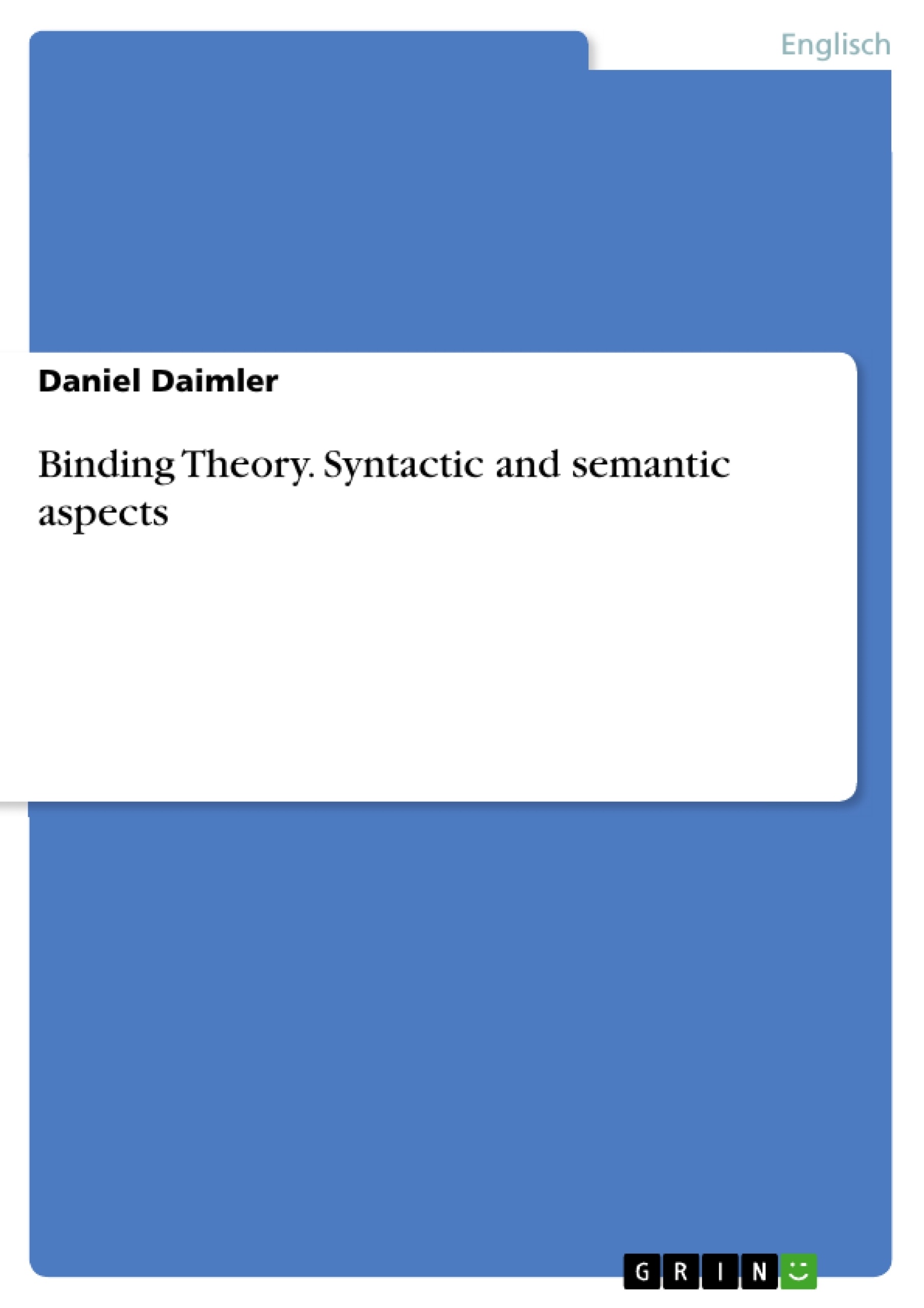Leseprobe
Inhalt
I. Different types of NPs : semantic references
II. C-Command : a structural relation
III. Binding Principles : NP distribution
Binding...
➔ deals with the distribution of different NPs in a sentence (Carnie 2002)
➔ regulates NP interpretation (Haegemann 1994)
Binding Theory covers both syntactic and semantic aspects of NP discussion!
(1) Sean drinks a lot of beer.
R-expression: An NP gets its meaning by referring to an entity in the world.
(2) Sean got himself a crate of beer as birthday present.
Anaphor: An NP that obligatorily gets its meaning from another NP in the sentence.
- reflexives: himself, herself, themself, myself
- reciprocals: each other
(3) Sean said that he played pinball.
- Sean said that Sean played pinball.
- Sean said that Bob played pinball.
Pronoun: An NP that may ( but need not) get its meaning from another word in the sentence.
Antecedent
(4) Sean got himself a crate of beer as birthday present.
Anaphor
Antecedent: An NP that gives its meaning to a pronoun or anaphor
Coindexiation: Two Nps are said to be coindexed, if they refer to the same entity in the world and thus have the same index.
(5) Seani said that hei played pinballj.
(6) Seani said that hej played pinballk with Lindal.
(7) Seani got himselfi a crate of beerj.
(8) * Seani got himselfj a crate of beerk.
(9) [Seani´s brother]j got himselfj a crate of beerk.
(10) * [Seani´s brother]j got himselfi a crate of beerk.
(11) * Himselfi got Seani a crate of beerk.
Abbildung in dieser Leseprobe nicht enthalten
Abbildung in dieser Leseprobe nicht enthalten
C-Command : a structural relation
Abbildung in dieser Leseprobe nicht enthalten
➔ Node X c-commands node Y, if every branching node dominating X also dominates Y, and neither X nor Y dominate the other.
Abbildung in dieser Leseprobe nicht enthalten
Abbildung in dieser Leseprobe nicht enthalten
➔ The antecedent must c-command the anaphor, not the reverse!
Definition Binding
The antecedent X binds the anaphor or pronoun Y if and only if
X c-commands Y and X and Y are coindexed.
Binding Principle A
The distribution of anaphors
An anaphor must be bound in its binding domain (i.e. the same clause).
* [Seani´s brother]j got himselfi a crate of beer.
* Seani said that himselfi played pinball.
Binding Principle B
The distribution of pronouns
A pronoun must be free (i.e. not bound) in its binding domain.
* Seani got himi a crate of beer.
Binding Principle C
The distribution of R-expressions
An R-expression must be free (i.e. cannot be bound at all).
* Shei said that Lindai was a pinball queen.
Abbildung in dieser Leseprobe nicht enthalten
- Arbeit zitieren
- M.A. Daniel Daimler (Autor:in), 2002, Binding Theory. Syntactic and semantic aspects, München, GRIN Verlag, https://www.grin.com/document/107795
Kostenlos Autor werden






















Kommentare